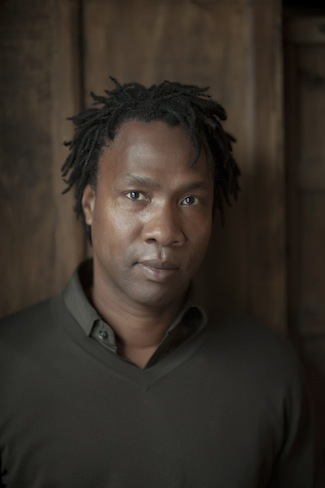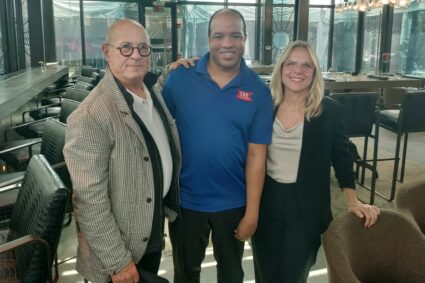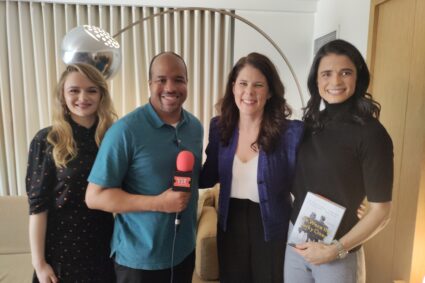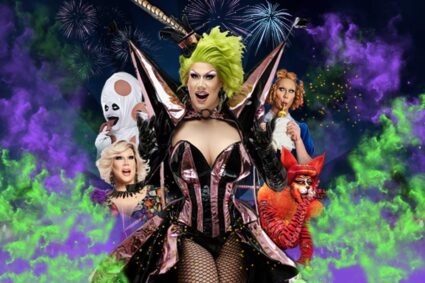
On this edition of INTERVUE, I sat down with director Roger Ross Williams. In 2010, he made history by becoming the first African-American to win the Academy Award for Best Documentary (Short Subject) for Music by Prudence. This weekend, he’s back on the big screen with his latest doc “Life, Animated”. Based on the 2014 novel by Ron Suskind, it’s the inspirational story of Owen Suskind, a young man who was unable to talk when he was diagnosed with autism at the age of three. A few years later developed to speak once again through the help and magic of classic Disney films.
I remember reading that Ron had come to you and informed you about his book “Life, Animated” and felt that you were the person to direct the film. Walk us through the genesis.
So I’ve known Ron for fifteen years and we worked together as journalists for ABC News. We stayed in touch. We actually did this show for PBS called “Life 360”. Michelle Martin was the host. I did a piece about Cornelia’s parents and how they met. I was working on something and Ron is like “Oh, I needed someone to edit Owen’s Bar Mitzvah video”. So, I even had a hand in Owen’s Bar Mitzvah video. This is how I knew the family. So Ron came to me about his book and he said, “You know, I think this would make a great documentary” and I jumped on it. I really connect with it.
Did you know anything about Autism prior to working on the film?
No, I didn’t know anything at all. I didn’t know anyone living with autism. I didn’t know anything about autism. So, which I really think informs the film because I feel more comfortable with autism. In the beginning of the film, you see Owen pacing and self-talking. It may make you seem uncomfortable as an audience but by the end of the film, you’re so immersed in Owen’s world that when you see him pacing and self-talking, you know exactly what’s going on in his head, exactly what’s he thinking and exactly what he’s feeling. This was always about telling the story from Owen’s point of view, getting into Owen’s head and getting into Owen’s world.
Speaking of Owen’s world, it was part live-action, part animated. I’d like to know who did the animation. It’s amazing!
The animation was created by a French company in Paris called Mac Guff. Mac Guff is a fairly big mostly 3-D animation company that did “Despicable Me”, “The Lorax” and “Minions”. Philippe (Sonrier) the owner of the company, he had sold his company to Universal, but he kept a small group of animators in his office, beneath the Eiffel Tower. Philippe would sit there in his office, looking out the window and see the Eiffel Tower above him. Philippe had put together a group of young french animators. I wanted to go to France Because I liked what the French were doing with 2-D animation. Owen connects and identifies with hand-drawn animation. I wanted this to be hand-drawn. I wanted to be really Owen’s creation be different from Disney – to create a world inside Owen’s head. So, by the time you get to the animation of the film, you’re ready to go and enter Owen’s world of the sidekicks.
What was it like to take Owen’s story from Ron’s book and make it into a movie? What were some of the things that you learned about Owen throughout the filmmaking?
I didn’t know Owen very well when I started the film. I didn’t know he had Autism. I feel that this is a life-changing journey for me because I got to understand what its like to live with Autism and people like Owen. You know, Owen is so brilliant because here’s a kid who grew up on this diet of myth and fable. These Disney classic stories are really classic myths and fables. He becomes an expert on not just stories but life. Stories are what we need all need to connect and make us human. He’s an expert on what makes us human. How stories are such an integral part of who we are. He made me a better storyteller in creating the film because for me, this was always a classic coming-of-age story about a young kid who’s growing up who hitting those things like graduating, moving out on his own and falling in love. It’s about the challenges we all faced. It has these universal themes and that was important to follow him in this transformative years and his life and then flashback to the moments of how he got there.
When did you start filming?
I think my first shoot was February 2014. It was the Valentine’s Day dance at Owen’s school. That’s how I met Emily and him and Emily would dance. I cut this little piece together for the New York Times. I wrote a video that I did in one day. It was excerpt from the book and New York Times. Then it sort of blew up on New York Times that it was read by so many people. That clip was really what started off the film version.
The film was shown at Sundance and it won the Directing Prize. How does that feel?
It was amazing. I mean, you know, Sundance is a blur because there’s so much going on. It’s the first time you’re showing the film to an audience. Everyone who worked on the film. Everyone who’s in the film. Everyone is there. It’s all very blurry except when I won the directing award. Everything slowed down and I remember every single second of hearing my name, walking up to the stage and walking up to the microphone. I remember every word that I said. It was just an amazing moment because you worked so hard as a filmmaker and to be recognized by Sundance in that way is such an honor. I was so happy.
Did you have Disney’s full cooperation with the documentary?
Well, of course they had hesitation because they didn’t know who I was or what the film….
You mean, they didn’t see your Oscar-winning short? (We both laugh)
They did. You know its funny because I met Sean Bailey, who is the President of Disney Productions, and we were introduced to Carrie Putnam, The CEO of Sundance Institute. I am on the alumni board and Sean is on the board of Trustees. She was the one who connect us. I went and told them about the film and then it was a process with keeping them abreast with what we’re doing. There was one point where the producer, Julie, and I went out there and Sean had assembled all the heads of the different departments. We pitched them the film and showed them different clips to Disney. By the time we were done, they were in tears because they didn’t realize how big and what they create is his world but not that it could change a life and I feel that it moved them and that’s why they didn’t stand in our way. They could have blocked us but they didn’t.
I have to ask…. what’s your favorite Disney film?
I wasn’t really a Disney fan. Going into this, I was really into Hanna-Barbera.
There’s nothing wrong with Hanna-Barbera.
But thinking coming out of this, I connected with Peter Pan. I think what makes me able to tell a story is that I have this sort of child-like wonder. I never feel like an adult. I feel like I’m a kid. And that sort of magical mystical quality of Peter Pan and the ideal of not wanting to grow up is something that I totally identify with.
What advice would you give to any upcoming filmmakers?
You better be passionate and it better be personal – the film you’re making because it takes so much of you to make the film and to cross the finish line. You really need to be passionate about it and it better be a story you have to tell. If you have that passion, you will find a way. You also have to take risks in your filmmaking. It’s so easy for I quit my 9 to 5 and I made my film and it worked out. It may not work out the first times but you have to keep trying and you have to have that passion.
What is one story that you are so passionate about that you would like to bring to film?
I am making my next film, which is a personal documentary about the town where I grew up in PA. All my friends that I went to High School with and many of my family members are stuck in prison and in the cycle of mass incarceration in the African American community. I am telling that story next. That’s going to be tough because it’s a very personal story. It’s going to be very difficult. I think you have to go to places that make you uncomfortable. You have to tackle things that are difficult but that’s where you create great art.
Thank you Roger for the wonderful interview. In the second and final part of the Life, Animated interviews, I will be talking to the Suskind family. Don’t miss that and Don’t miss “Life, Animated” coming to theaters – this Friday


